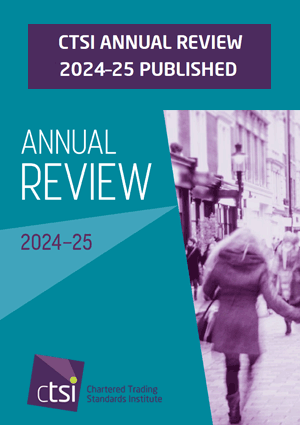National Institute for Health and Clinical Excellence (NICE)
|
|
Should NICE’s cost-effectiveness thresholds change?
We explore the ongoing debate around NICE’s cost-effectiveness thresholds and what the future holds.

Cost-effectiveness thresholds play a vital role in healthcare decision-making, helping to ensure that NHS resources are used efficiently and fairly. As NICE's programme director for medicines evaluation, I explore some of the ongoing discussions around this topic and explain why NICE uses its current thresholds.
NICE’s approach to medicines evaluation
At NICE, we're tasked with ensuring that the NHS uses its finite budget effectively. Any new medicine we recommend must be funded from existing NHS budgets. This creates an 'opportunity cost' – introducing a new medicine that is more costly than existing treatments means other services somewhere in the NHS will need to be displaced to accommodate it.
Each assessment follows a rigorous evaluation process. We particularly focus on how well a medicine works (clinical effectiveness), the overall cost to the NHS, and whether spending more on a new medicine is justified because the treatment improves health outcomes (cost effectiveness). When NICE assesses costs of new medicines, these include not only the price set by pharmaceutical companies but also the expenses involved in administering the treatment.
But how do we determine what represents good value for money? NICE assessments use quality-adjusted life years (QALYs) to estimate the health benefits of new medicines. The QALY combines both the length of life gained from a treatment and its impact on quality of life, represented as a single number. Generally, NICE considers medicines costing between £20,000 and £30,000 per additional QALY gained to represent good value for money for the NHS. This means that for a medicine to be considered cost effective, it should typically generate 1 additional year of perfect health (or an equivalent combination of additional life expectancy and quality of life improvements) for no more than £20,000-£30,000.
This threshold is often misunderstood as meaning the NHS cannot spend more than £20,000-£30,000 per patient per year. This is inaccurate. In cost-effectiveness analysis, we compare a new medicine’s costs and health benefits (QALYs) against existing NHS treatments. A medicine’s yearly treatment costs can be much higher than £30,000 per person and still be considered cost effective because we focus on the difference in costs between the new medicine and the current standard of care.
The threshold debate
Our cost-effectiveness threshold range has not gone unchallenged. Over the years, some researchers have proposed that the threshold should be closer to around £15,000 per QALY gained. This was first suggested based on an estimate of how much the entire NHS spends to generate 1 QALY. This sparked considerable debate, with some arguing that approving medicines at £30,000 per QALY effectively removes 2 QALYs from the NHS for every QALY generated.
In practice, the impact of NICE recommendations on other NHS services will vary and depends on many factors. It’s also important to note that not every medicine we recommend will reach the £30,000 threshold – some are significantly less. If the incremental cost-effectiveness of a new medicine is above £20,000 per QALY gained, then our committees must explicitly consider whether they can still recommend the medicine. They can only do so when they have considered any uncertainty present in the evidence and whether potential benefits have been fully captured.
This careful consideration reflects the reality that NICE recommendations can come with an associated opportunity cost to the NHS. This is why it’s so important that NICE has clear and predictable rules around what it considers good value for money.
This predictability, however, has led to ongoing debate about where exactly the threshold should be set. While NICE’s threshold has not changed for many years, the price of medicines has continued to rise. This has prompted frequent calls from both pharmaceutical companies and patient groups to raise the threshold, which they believe would allow more costly medicines to be made available on the NHS.
Conversely, any suggestion that NICE should lower its threshold could be met with alarm by these same stakeholders, who might fear that it will result in fewer innovative new medicines reaching patients. NICE’s threshold primarily exists so that our committees can consider the opportunity costs to the NHS of its recommendations. In practice, the use of a cost-effectiveness threshold also gives an important signal to the life sciences industry of how much the NHS is willing to pay for technologies that improve health outcomes for the population.
While calls for higher thresholds are understandable, our current approach already supports significant access to new medicines. In 2023/24, we made positive recommendations in 86% of our completed technology appraisal guidance. Setting higher thresholds might seem like an attractive way to improve access to more expensive medicines, but it could have unintended consequences. It could mean less funding for other essential healthcare services that also deliver significant benefits to patients.
Looking to the future
While the debate continues to evolve, NICE’s focus when evaluating new medicines remains clear: making decisions that balance innovation with financial sustainability to deliver the best possible outcomes for patients, while maintaining a robust and viable publicly-funded healthcare system.
Ultimately, NICE assessments provide a coordinated, fair approach to the adoption of modern medicines. While we welcome research and discussion around our health economic methods, our thresholds are fixed until the end of 2028 through the government’s voluntary scheme for branded medicines pricing, access and growth. This provides stability and certainty for all stakeholders during the agreed period.
The discussion around cost-effectiveness thresholds will undoubtedly continue, but what remains constant is our commitment to rigorous evaluation and transparent decision-making in the service of patients, the NHS and taxpayers.
Original article link: https://www.nice.org.uk/news/blogs/should-nice-s-cost-effectiveness-thresholds-change-


